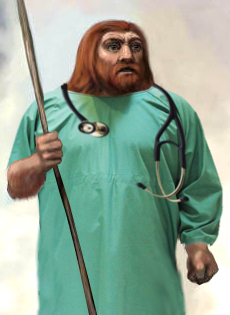Ancient warts tracked over time
 As Homo sapiens and Neanderthals interbred, a new study says their genital warts came together too.
As Homo sapiens and Neanderthals interbred, a new study says their genital warts came together too.
A new study reveals that when Neanderthals and Denisovans left Africa half a million years ago, they carried a variant of human papillomavirus (HPV).
Another variant of HPV stayed with early Homo sapiens who remained in Africa, but later when the populations bred with each other, their cancer-causing wart viruses intermingled too.
A team of French and Spanish researchers used statistical modelling methods to map the origins of today's HPV for a paper published in the journal Molecular Biology and Evolution.
They traced mutated regions of the virus to follow HPV's origins back around 500,000 years.
The experts wanted to know how various strains of HPV made their way around the world. One particular mystery relates to the history of the extremely carcinogenic HPV16 strain, which is virtually non-existent in sub-Saharan Africa, but extremely common elsewhere.
They started with two assumptions: either new strains of HPV mutated within early Homo sapiens after they left Africa, or, travelling Homo sapiens picked up a much older strain of HPV16 from Neanderthals and Denisovans.
The advanced modelling project suggested that the latter was more likely.
“The split between Neanderthals/Denisovans and modern human ancestor populations was mirrored by a split in the viral populations, namely HPV16A, carried by ancestral human populations, and HPV16BCD, carried by the populations of modern human ancestors in Africa,” the research paper states.
“Later, the interbreeding events between Neanderthal and Denisovan populations with modern human ancestor populations lead to a host-switch through sexual transmission of the HPV16A virus lineage from archaic populations into the modern human ancestors.
“The HPV16A lineage, thus transmitted, expanded rapidly in the new host populations and became dominant in Eurasia and in the Americas.”
Essentially, Homo sapiens brought a few HPV variants with them when they left Africa 60-120,000 years ago, some of which are still there today.
However, HPV16A, the ancestor of today's HPV16, came from Neanderthals and Denisovans.
This means that for it make its way into early humans, they must have had sex with Neanderthals and Denisovans infected with the HPV16A variant of genital warts, eventually spreading the archaic sexually-transmitted infection through most of the world's Homo sapiens population.







 Print
Print